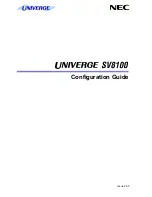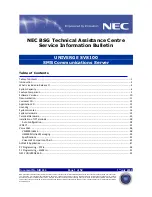
Remote System Management
4–2 Compaq ES40CSLP Rackmount System Installation/User/Service Guide
–
The PCI fan (Fan 5) fails.
–
When more than one CPU and/or power supply fans fail.
•
Retrieves and passes information about a system shutdown to SRM at the next power-up.
SRM displays a message regarding the last shutdown.
•
Provides a command-line interface (CLI) for the user to control the system. From the CLI
you can power the system on and off, halt or reset the system, and monitor the system
environment.
•
Passes error log information to shared RAM so that this information can be accessed by the
system.
The RMC logic is implemented using an 8-bit microprocessor, PIC17C44, as the primary
control device. The firmware code resides on the microprocessor and in flash memory. If the
RMC firmware should ever become corrupted or obsolete, you can update it manually using a
Loadable Firmware Update Utility. See Section 3.10.3 for details. The microprocessor can also
communicate with the system power control logic to turn on or turn off power to the rest of the
system.
The RMC is powered by an auxiliary 5V power supply. You can gain access to the RMC as
long as AC power is available to the system (through the wall outlet). Thus, if the system fails,
you can still access the RMC and gather information about the failure.
Configuration, Error Log, and Asset Information
The RMC provides additional functionality to read and write configuration and error log
information to FRU error log devices. These operations are carried out via shared RAM (also
called dual-port RAM or DPR).
At power-on, the RMC reads the EEPROMs in the system and dumps the contents into the
DPR. These EEPROMs contain configuration information, asset inventory and revision
information, and error logs. During power-up the SROM sends status and error information for
each CPU to the DPR. The system also writes error log information to the DPR when an error
occurs. Service providers can access the contents of the DPR to diagnose system problems.
4.3 Operating Modes
The RMC can be configured to manage different data flow paths defined by the com1_mode
environment variable. In through mode (the default), all data and control signals flow from the
system COM1 port through the RMC to the active external port. You can also set bypass modes
so that the signals partially or completely bypass the RMC. The com1_mode environment
variable can be set from either SRM or the RMC (see Section 4.7.1).
4.3.1 Through Mode
Through mode is the default operating mode. The RMC routes every character of data between
the internal system COM1 port and the active external port, either the local COM1 serial port
(MMJ) or the 9-pin modem port. If a modem is connected, the data goes to the modem. The
RMC filters the data for a specific escape sequence. If it detects the escape sequence, it enters
the RMC CLI.
Figure 4-1 illustrates the data flow in through mode. The internal system COM1 port is
connected to one port of the DUART chip, and the other port is connected to a 9-pin external
modem port, providing full modem controls. The DUART is controlled by the RMC
microprocessor, which moves characters between the two UART ports. The local MMJ port is
always connected to the internal UART of the microprocessor. The escape sequence signals the
RMC to enter the CLI. Data issued from the CLI is transmitted between the RMC
microprocessor and the active port that enters the RMC.
Содержание ES40CSLP
Страница 10: ...This is some white text...
Страница 14: ...This is some white text...
Страница 46: ...This is some white text...
Страница 80: ...This is some white text...
Страница 98: ...This is some white text...
Страница 126: ...This is some white text...
Страница 188: ...This is some white text...
Страница 190: ...This is some white text...
















































